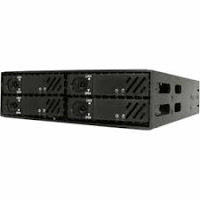Hard Disk IDE
Typically, devices such as floppy drives, hard drives, and CD-ROM drive is connected to a computer via the interface device Integrated Drive Electronics (IDE). IDE is basically not the name of the actual techniques to standard interfaces. Name orginalnya, AT Attachment (ATA), which means that the interface originally developed for IBM AT computer. IDE hard disks are data storage devices that plug into the motherboard with IDE interface.
Hard Disk SATA
Serial Advanced Technology Attachment (SATA) is the primary bus on a computer that is designed to transfer data between the motherboard and the data storage media, such as hard disks and optical drives in computers.
Main advantage of using SATA hard disk is faster data transfer, can move or add the device during operation (if the operating system support), the thinner the cable so that the air cooling process can be inefficient, and many other advantages.
Main advantage of using SATA hard disk is faster data transfer, can move or add the device during operation (if the operating system support), the thinner the cable so that the air cooling process can be inefficient, and many other advantages.
Hard Disk SCSI
Small Computer System Interface (SCSI) is the ANSI standard for connecting devices to the computer system. In general, SCSI devices are data storage media, such as SCSI hard disks. Generally SCSI is a parallel technology, but many serial SCSI variant that has been circulating in the market, such as Ware Fire and Fibre Channel.
SCSI is an alternative to an IDE (Integrated Drive Electronics) high-end. One IDE controller can control as many as eight or 16 drives. In addition, the SCSI cables are usually larger and longer than on the IDE cable
SCSI is an alternative to an IDE (Integrated Drive Electronics) high-end. One IDE controller can control as many as eight or 16 drives. In addition, the SCSI cables are usually larger and longer than on the IDE cable
Hard Disk SAS
Serial Attached SCSI (SAS) is a data transfer technology designed to move data to and from computer storage media such as hard drives and tape drives. SAS is a serial point to point protocol that replaces the parallel SCSI bus that first appeared in the mid-1980s in the data center, and use the SCSI standard. Currently, SAS is lower compared to parallel SCSI implementations, but in the future SAS will be doubled to reach speeds of 6 GB / s, thus allowing much higher data transfer speeds when compared with existing ones.
Protokal SAS was developed by the T10 technical committee of the International Committee For Information Technology Standards (INCITS) and promoted by the SCSI Trade Association (SCSITA).
Protokal SAS was developed by the T10 technical committee of the International Committee For Information Technology Standards (INCITS) and promoted by the SCSI Trade Association (SCSITA).
Hard Disk Back Planes
Blackplane is a circuit board that connects several connectors in parallel, so that each pin within each connector is connected to the same pins on the connector to another, and a bus. The computer system that uses such an approach is called the S-100 bus because it has 100 pins.
On systems with a cable, the cable must be bent when I want to add or subtract the card in the system, and this bending can cause mechanical damage. However, the backplane is not affected by anything else, so that the backplane has a longer lifetime. For example, DIN 41 612 connectors are used on VMEbus systems can last for 50 to 500 installation and removal (or also called maiting cycles), depending on its quality.
Backplane can be used without the use of single board computers to simplify the addition of power at plug-in cards. In addition, many bus expansion cable that makes the computer bus to an external backplane, usually located on the enclosure, to distinguish the slots on the computer. The device has a transmitter cable to the computer, expansion boards on the backplane remote, and cables between the two. Bus expansion cable does not require single board computer on the bus to control the card I / O caused by the expansion of electricity
On systems with a cable, the cable must be bent when I want to add or subtract the card in the system, and this bending can cause mechanical damage. However, the backplane is not affected by anything else, so that the backplane has a longer lifetime. For example, DIN 41 612 connectors are used on VMEbus systems can last for 50 to 500 installation and removal (or also called maiting cycles), depending on its quality.
Backplane can be used without the use of single board computers to simplify the addition of power at plug-in cards. In addition, many bus expansion cable that makes the computer bus to an external backplane, usually located on the enclosure, to distinguish the slots on the computer. The device has a transmitter cable to the computer, expansion boards on the backplane remote, and cables between the two. Bus expansion cable does not require single board computer on the bus to control the card I / O caused by the expansion of electricity






No comments:
Post a Comment